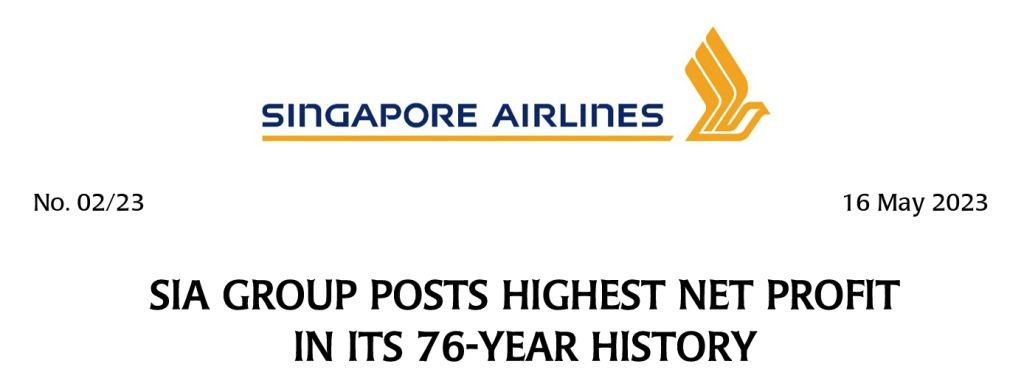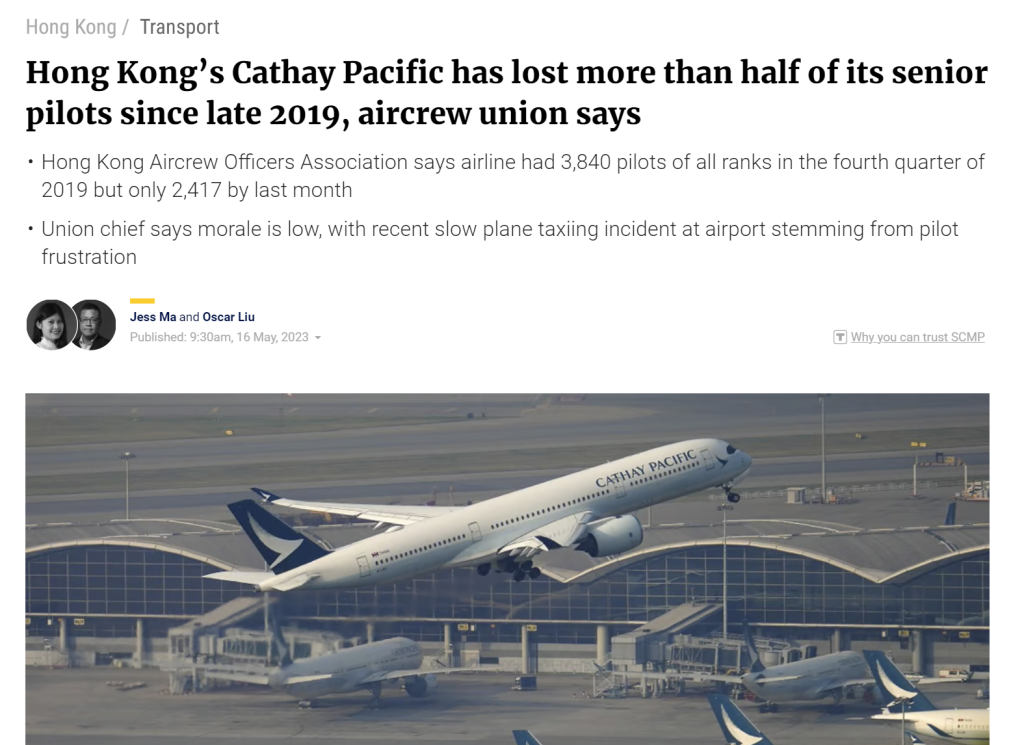Disclaimer: Opinions expressed below belong solely to the author.
“What doesn’t kill you makes you stronger” is an old adage that certainly applies today to one of the world’s most respected air carriers: Singapore Airlines, which has just announced a record net profit in its entire 76-year history: S$2.16 billion for the year ending in March 2023.

Considering that it happened in the year of air travel revival when many routes are still below their pre-pandemic level utilisation, we can probably expect continued high performance throughout 2023 and beyond.
I have to say I feel personally vindicated, as I received some flak for my optimism at the height of the pandemic, predicting almost exactly two years ago that SIA was headed for a strong post-pandemic rebound that is going to benefit it in the long-term vs. nearly all of its competitors.

Yes, it was bleeding money, it had to lay off some people and cut expenses everywhere to save every penny, but it was nothing compared to a string of near-bankruptcies that pretty much wiped out most of its regional competition.
With ample support from the government and chiefly, Temasek, which owns a majority stake in the business, it helped SIA to raise billions of dollars to weather the pandemic storm.
As a result, Singapore’s flagship carrier could retain most of its employees (allowing it to respond to a post-COVID surge in demand without staffing issues that dogged European and American competition last year) and streamline its fleet, retiring older aircraft ahead of time, while waiting for the delivery of new ones.
Sunshine after the rain
Taking the long-term view was the right approach as even the worst pandemic surely must have ended one day and people would return to flying at even greater numbers.
And they did.
By the end of 2021, SIA already posted a small profit. By April 2022, it was operating at 56 per cent of capacity and in the six months between March and September 2022, it reported return to pre-pandemic levels of employment, with 90 per cent of its fleet in the air.
Its planes operated 75 per cent capacity, compared to just 40 per cent among regional competitors — all of whom were in a far worse financial situation to begin with.
As of March 2023, the group’s overall passenger capacity stood at 79 per cent of pre-pandemic levels compared to 58 per cent for other international services of Asia-Pacific airlines, while passenger load factor reached 85.4 per cent — the highest in SIA history (i.e. it fills more of the seats available on its planes at the moment).
“Only when the tide goes out do you learn who has been swimming naked”
…Warren Buffett once observed. Times of prosperity allow many mediocre players to exist in the market (any market).
Occasional crises are like wildfire — they may seem devastating but in reality, they are needed to clear the deadwood so the forest can thrive, sparing only those best prepared and most adaptable.
While it was undoubtedly a challenging time for Singapore Airlines, the company has emerged from it stronger than it otherwise would have been, precisely because prolonged, expensive lockdowns starved less well-prepared competitors to the brink of death, clearing the skies for SIA to take over a larger piece of the market.
We don’t have to look far for evidence, as the latest incidents of slow-taxiing at the airport in Hong Kong revealed significant problems of its once-leading air carrier industry.

On the very same day SIA posted its record-breaking profits, Hong Kong’s flagship, Cathay Pacific, saw wrestling between management and unions decrying dramatic fall in pilot headcount during the pandemic, exacerbated with deep pay cuts of up to 40 per cent and reduction in other benefits.
While Singapore Airlines is flying at near 80 per cent pre-2020 capacity, Cathay stands only at 50 per cent and, like most other companies in the industry, is struggling with labour shortages.
Two similar, rich cities, two major air hubs, two major international air carriers — but very, very different outcomes.
What about all the money that saved SIA? Isn’t it a burden?
To sum it in a word, no.
Total debts currently amount to S$15.3 billion, but it also has S$16.3 billion in the bank and an additional S$2.2 billion in undrawn lines of credit (i.e. it has more than enough to go around and its debt-to-equity ratio is well below 1.0).
With this much cash in hand, coming from booming operations, it has already begun redeeming the mandatory convertible bonds it issued in 2020, which were part of the pandemic rescue package.
By December 2022, it called the first tranche of S$3.86 billion in MCBs, even though it technically had time until 2030 to do it (or else they would convert to ordinary shares at maturity).
Ultimately, support for SIA came cheap and as it is rebounding to levels higher than before COVID. Everybody who trusted in the company is going to be better off, including the Singapore public.
Featured Image Credit: Boarding2Now / depositphotos










